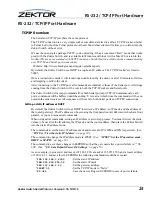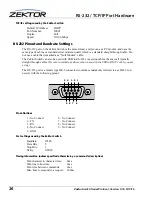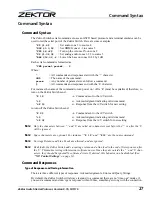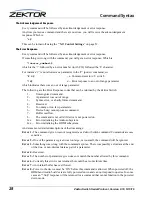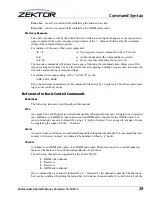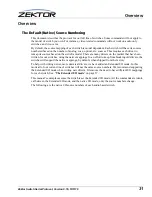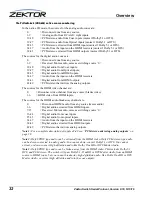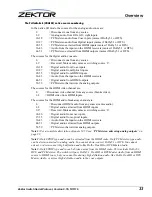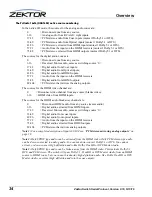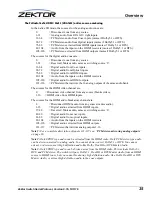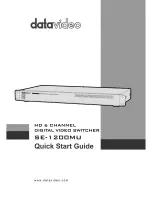
20
Switch User Guide, Version 0.16, 5/13/16
Using The Switch
Using The Switch
Functional Overview
The HDMI Switch Overview
HDMI has many issues associated with its distribution. It was originally designed to connect a DVD
player to a TV, with a few tweaks to the specification to allow for limited distribution.
HDCP Keys
HDMI allows for encrypted audio/video streams to be sent over the HDMI cables. To do this, each
receiving TV or monitor must be issued its own decryption key. This forces each HDMI cable to send
a different stream of encrypted data, even if it’s the same program being sent to two different monitors.
This prevents a simple splitter from working, since a simple splitter would send the same stream to two
different monitors.
This also allows the source (DVD player, Cable Box, etc) to determine the number of simultaneous
monitors allowed to view it’s content. Some cable box manufacturers only supplied a single HDCP
key, while some Blu-ray players supplied a very limit number (like 3). Even today there are manufac-
turers that limit the number of HDCP keys, in their Blu-ray players to 9.
To work around this problem, the Switch will cache keys from sources and generate keys when
needed, to supply up to 24 HDCP keys.
When a source runs out of HDCP keys (there are more monitors attempting to view a source than there
are keys), it can do a number of undefined things. Video can go blank, or it can flash on and off, or in
some cases the source could even lock up and need to be power cycled.
If you suspect an HDCP problem, you can verify this by:
•
Turning off the Switch
•
Turn off all TVs and monitors connected to the Switch
•
Turn on the Switch and set all zones to point to the source with the suspected HDCP problem.
•
Now start turning on zones. If the display starts flickering or blanking after you turn on a zone,
then the source most likely has one less HDCP key that the number of zones you have turned
on.
•
To remedy the HDCP problems, see the section on setting the number of HDCP keys.
(See:
“Adjusting HDCP key counts” on page 16)
.
For the most part there are fewer and fewer HDCP key issues with the newer HDMI products, and usu-
ally nothing needs to be done for the switch to work out of the box.
EDID
EDID is simple in concept. Each monitor or receiver contains a small data block that indicates what the
monitor’s or receiver’s capabilities are. When a source connects to a monitor, the monitor’s EDID is
read, and using this information, the source adjusts its output to match the capabilities of the monitor.
If a monitor can display 1080p and the source can output 1080p, then 1080p will be used. The same is
true for audio formats. The EDID will contain multiple resolutions that the monitor can display, and if
it can decode multiple audio formats, these formats will also be included in the EDID. The source will
compare the capabilities of the monitor, and it’s own capabilities, and choose the best video and audio
solution to send over the HDMI link.




















